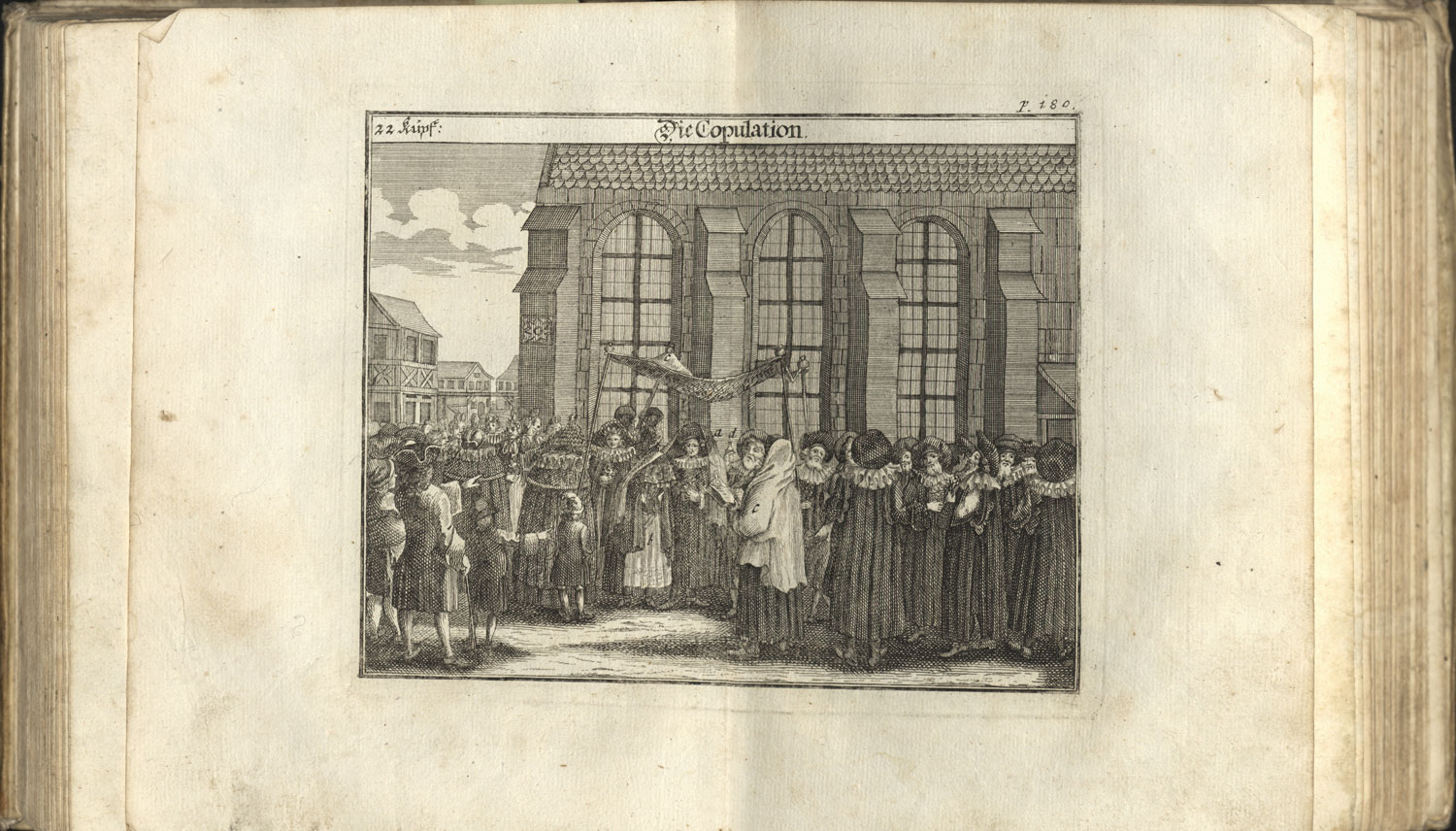Until the 19th century, Jewish weddings took place outside the synagogue, sometimes in secular locales, or, as was common in Germany, in the synagogue courtyard, as is shown in this engraving. Some synagogues had permanent wedding canopies (chuppahs) attached to their buildings for such events. The wedding was often preceded by an engagement ceremony, called a shiddukhin, wherein the terms of the marriage were worked out. Traditionally, the wedding was acknowledged in the synagogue by honoring the groom on the Sabbath before and after the marriage ceremony. Before the wedding the groom was called to the Torah, and sometimes special hymns were recited. The groom might also have been given a seat of honor—even under a canopy—the week following the wedding.
Some of the customs illustrated here include the placement of the chuppah in the synagogue courtyard, the covering of the bride’s head with a prayer shawl, and the smashing of a flask against the northern corner of the synagogue, said to be a source of demons. Some synagogues had a special stone in the wall—a chuppah stone—for the purpose of breaking the glass.
This print is one of three from the book Jüdisches Ceremoniel detailing the ceremonies of an 18th-century German Jewish wedding, from the engagement, to the procession to the synagogue, and finally to the marriage itself under the chuppah outside the synagogue. For the engraving of the marriage ceremony (Die Copulation) the synagogue shown is the impressive synagogue of Fürth, which was the site for many 18th-century synagogue illustrations.
Paul Christian Kirchner was a Jewish convert to Christianity, and his original publication of Jüdisches Ceremoniel (1717) was intended to disparage Jewish practice and to encourage conversion. For this reason, Kirchner’s original publication contained a biased and inaccurate depiction of Jewish ritual. The 1724 edition contains text significantly overhauled by Christian Hebraist Sebastian Jugendres (1685-1765), who revised or rewrote Kirchner’s original text to correct inaccuracies and soften its tone, adding extensive annotations, and incorporating illustrations such as this engraving. While still imperfect, reflecting Jugendres’s lack of first-hand experience with the rituals he was describing, his text and images provide a relatively accurate and comprehensive depiction of contemporary Jewish life.
